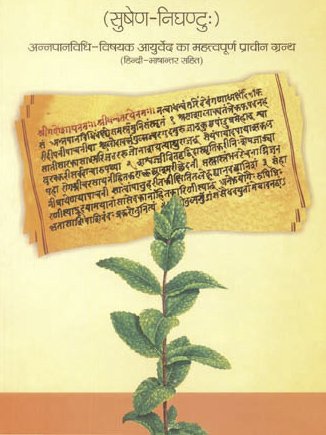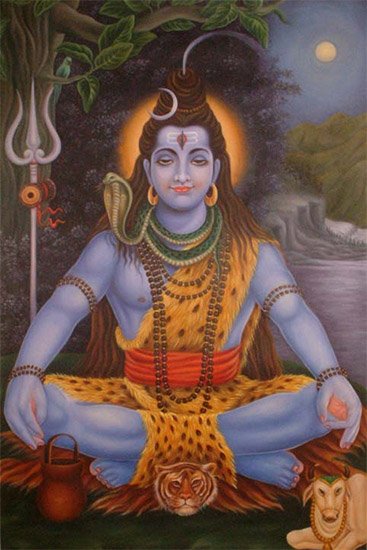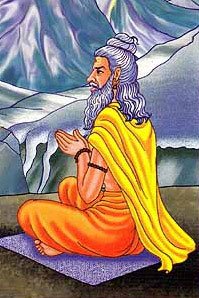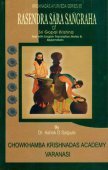Murcha, Mūrchā: 12 definitions
Introduction:
Murcha means something in Hinduism, Sanskrit. If you want to know the exact meaning, history, etymology or English translation of this term then check out the descriptions on this page. Add your comment or reference to a book if you want to contribute to this summary article.
Alternative spellings of this word include Murchha.
In Hinduism
Ayurveda (science of life)
Rasashastra (Alchemy and Herbo-Mineral preparations)
Source: Wisdom Library: Rasa-śāstraMūrchā (मूर्छा) refers to “loss of consciousness” according to the fifth volume of the Rasajalanidhi (chapter 21). Accordingly, “Those who are weak in constitution, have a low vitality, have an excess of the three doshas in their systems, and are in the habit of taking food, incongenial by combination are susceptible to this disease. Fits of unconsciousness [i.e., mūrchā] are preceded by nervous irritation due to suppression of calls of nature and physical shocks, which make the three doshas enter into the seats of sense-organs, internal as well as external. Obstruction of the sense-carrying passages by the three doshas mean total extinction of all sensations, agreeable or disagreeable, which makes the patient appear like an inanimate object”.
Murcha is of seven different kinds, being due to (a) vayu, (b) pitta, (c) kapha, (d) a combination of these three, (e) smell or sight of blood, (f) drinking of alcohol, and (g) poison. In all these seven, there is a pre-dominance of pitta. An attack of any of these diseases is generally preceded by pain in the heart, yawning, uneasiness, and morbidness of consciousness. They are to be known according to their respective indications [...].
Source: archive.org: Rasa-Jala-Nidhi: Or Ocean of indian chemistry and alchemyMūrchā (मूर्छा) refers to “loss of consciousness”.— Those who are weak in constitution, have a low vitality, have an excess of the three doṣas in their systems, and are in the habit of taking food, incongenial by combination are susceptible to Murcha.
Kalpa (Formulas, Drug prescriptions and other Medicinal preparations)
Source: Shodhganga: Edition translation and critical study of yogasarasamgrahaMūrchā (मूर्छा) refers to “syncope” and is one of the various diseases mentioned in the 15th-century Yogasārasaṅgraha (Yogasara-saṅgraha) by Vāsudeva: an unpublished Keralite work representing an Ayurvedic compendium of medicinal recipes. The Yogasārasaṃgraha [mentioning mūrchā] deals with entire recipes in the route of administration, and thus deals with the knowledge of pharmacy (bhaiṣajya-kalpanā) which is a branch of pharmacology (dravyaguṇa).
Unclassified Ayurveda definitions
Source: archive.org: Vagbhata’s Ashtanga Hridaya Samhita (first 5 chapters)Mūrchā (मूर्छा) refers to “stupor”, as mentioned in verse 5.15-16 of the Aṣṭāṅgahṛdayasaṃhitā (Sūtrasthāna) by Vāgbhaṭa.—Accordingly, “[...] normal, fat, and lean (respectively get) those who drink water during, after, and before meals. Cold water removes alcoholism, lassitude, stupor [viz., mūrchā], nausea, fatigue, giddiness, thirst, heat through hot (factors), hemorrhage, and poison”.
Source: archive.org: Science And Technology In Medievel India (Ayurveda)Mūrchā (मूर्छा) refers to “fainting” and is one of the various diseases dealt with in the Dhanvantarīyapathyāpathya, as is mentioned in A. Rahman’s Science and Technology in Medievel India: A bibliography of source materials in Sanskrit, Arabic and Persian.—Ancient and medieval India produced a wide range of scientific manuscripts and major contributions lie in the field of medicine, astronomy and mathematics, besides covering encyclopedic glossaries and technical dictionaries.—The Dhanvantarīyapathyāpathya deals with the treatment of various diseases [e.g., Mūrchā]. The word pathyāpathya classifies those elements as either beneficial or hurtful in disease.

Āyurveda (आयुर्वेद, ayurveda) is a branch of Indian science dealing with medicine, herbalism, taxology, anatomy, surgery, alchemy and related topics. Traditional practice of Āyurveda in ancient India dates back to at least the first millenium BC. Literature is commonly written in Sanskrit using various poetic metres.
Shaivism (Shaiva philosophy)
Source: Brill: Śaivism and the Tantric Traditions (philosophy)Mūrchā (मूर्छा) refers to “(a state of) stupor”, according to the Īśvarapratyabhijñāvivṛtivimarśinī 2.129-130.—Accordingly, “Even [if] an external object [is] inferred [, it] can be talked about only insofar as it is being manifest, for if [it] were distinct from the manifesting consciousness (prakāśa), since as a result it would not be manifest, [the awareness of] the very fact that the entity is inferred would amount to a state of stupor (mūrchā-prāya)!”.

Shaiva (शैव, śaiva) or Shaivism (śaivism) represents a tradition of Hinduism worshiping Shiva as the supreme being. Closely related to Shaktism, Shaiva literature includes a range of scriptures, including Tantras, while the root of this tradition may be traced back to the ancient Vedas.
Purana and Itihasa (epic history)
Source: archive.org: Shiva Purana - English TranslationMūrchā (मूर्छा) refers to “(becoming) unconscious”, according to the Śivapurāṇa 2.4.8 (“The battle between the gods and Asuras”).—Accordingly, as Brahmā narrated to Nārada: “[...] Skilled adepts in warfare they hit and smashed one another with tridents, double-edged swords, nooses, axes and sharp-edged spikes. Immediately after being hit hard with a trident by Vīrabhadra, Tāraka fell unconscious (mūrchā-paripluta) on the ground. Regaining consciousness quickly Tāraka the excellent Asura got up and forcefully hit Vīrabhadra with his spear. [...]”

The Purana (पुराण, purāṇas) refers to Sanskrit literature preserving ancient India’s vast cultural history, including historical legends, religious ceremonies, various arts and sciences. The eighteen mahapuranas total over 400,000 shlokas (metrical couplets) and date to at least several centuries BCE.
Languages of India and abroad
Sanskrit dictionary
Source: Cologne Digital Sanskrit Dictionaries: Benfey Sanskrit-English DictionaryMūrchā (मूर्छा).—i.e. mūrch + a, f. Fainting, loss of consciousness, [Uttara Rāmacarita, 2. ed. Calc., 1862.] 58, 7; [Pañcatantra] 35, 10 (instr. by fainting, i. e. fainted).
Source: Cologne Digital Sanskrit Dictionaries: Cappeller Sanskrit-English DictionaryMūrchā (मूर्छा).—[feminine] thickening, coagulation; swoon, faint, stupefaction, astonishment; melody.
Source: Cologne Digital Sanskrit Dictionaries: Monier-Williams Sanskrit-English Dictionary1) Mūrchā (मूर्छा):—[from mūrch] f. fainting, a swoon, stupor, [Mahābhārata; Kāvya literature] etc.
2) [v.s. ...] mental stupefaction, infatuation, delusion, hallucination, [Kāvya literature; Sarvadarśana-saṃgraha]
3) [v.s. ...] congealment, solidification (of quicksilver), [Kāvya literature]
4) [v.s. ...] modulation, melody (= mūrchanā), [Śiśupāla-vadha [Scholiast or Commentator]]
[Sanskrit to German]
Sanskrit, also spelled संस्कृतम् (saṃskṛtam), is an ancient language of India commonly seen as the grandmother of the Indo-European language family (even English!). Closely allied with Prakrit and Pali, Sanskrit is more exhaustive in both grammar and terms and has the most extensive collection of literature in the world, greatly surpassing its sister-languages Greek and Latin.
See also (Relevant definitions)
Starts with (+3): Murccai, Murccaivayu, Murccanai, Murccanam, Murchakhan, Murchakhana, Murchakshepa, Murchala, Murchamaya, Murchana, Murchane, Murchang, Murchantaka, Murchapagama, Murchaparipluta, Murchaparita, Murchaprada, Murchapraya, Murchata, Murchavat.
Ends with: Ahimurcha, Sammurcha, Sampurnamurcha.
Full-text (+5): Murchala, Murchakshepa, Murchaparita, Murchaprada, Murchaparipluta, Murchamaya, Murchavat, Murchapagama, Sampurnamurcha, Pratigha, Murcci, Fainting, Murccai, Praya, Vyabadhate, Kal, Vyabadhati, Vyabadhayate, Kanarasa, Kana.
Relevant text
Search found 7 books and stories containing Murcha, Mūrchā; (plurals include: Murchas, Mūrchās). You can also click to the full overview containing English textual excerpts. Below are direct links for the most relevant articles:
Garga Samhita (English) (by Danavir Goswami)
Verse 6.16.41 < [Chapter 16 - Seeing Śrī Rādhā’s Form]
Tattvartha Sutra (with commentary) (by Vijay K. Jain)
Verse 7.17 - Definition of parigraha (attachment-to-possessions) < [Chapter 7 - The Five Vows]
Rasa Jala Nidhi, vol 5: Treatment of various afflictions (by Bhudeb Mookerjee)
Chapter 21 - Symptoms and Treatment of Murcha (loss of consciousness)
Chapter 22 - Symptoms and Treatment of Sannyasa (malignant swoon)
Chapter 23 - Bhrama (vertigo), Nidra (sleeping disease), and Tandra (drowsiness)
Chaitanya Bhagavata (by Bhumipati Dāsa)
Verse 2.108 < [Chapter 2 - The Lord’s Manifestation at the House of Śrīvāsa and the Inauguration of Saṅkīrtana]
Verse 1.12.217 < [Chapter 12 - The Lord’s Wandering Throughout Navadvīpa]
Verse 2.5.94 < [Chapter 5 - Lord Nityānanda’s Vyāsa-pūjā Ceremony and His Darśana of the Lord’s Six-armed Form]
Jivanandana of Anandaraya Makhin (Study) (by G. D. Jayalakshmi)
Other Diseases < [Chapter 4 - Āyurvedic principles in Jīvanandana Nāṭaka]
Brihad Bhagavatamrita (commentary) (by Śrī Śrīmad Bhaktivedānta Nārāyana Gosvāmī Mahārāja)
Verse 2.1.80 < [Chapter 1 - Vairāgya (renunciation)]
Related products
